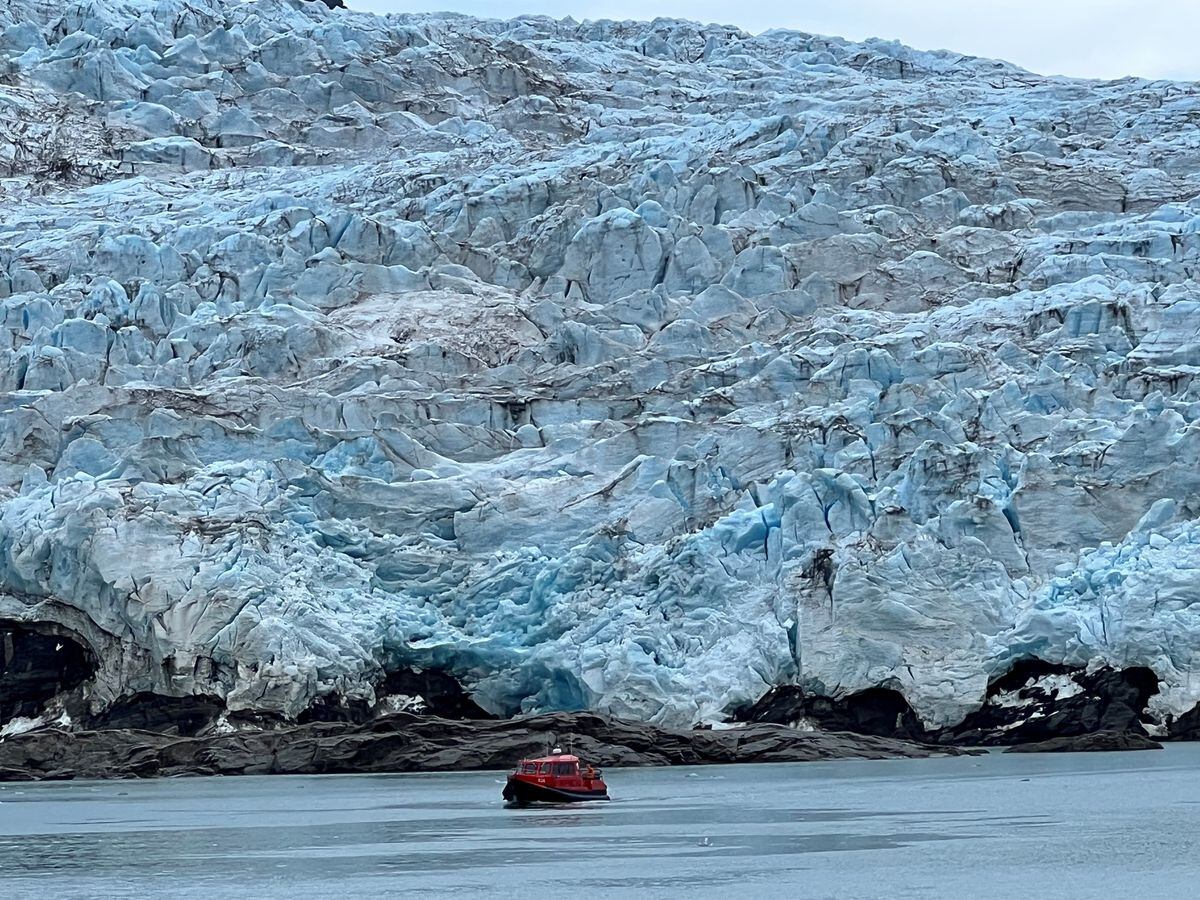Icon: enlarge
Here you can see how the huge glacier plate on the north coast of Greenland peeled off.
Photo: HANDOUT / AFP
Icon: enlarge
The dark and medium blue fields of this graphic show how much larger the sea ice area within the Arctic Circle was 40 and 20 years ago - measured in September, when there is the least amount of sea ice.
Now only the light blue area is left.
This causes many problems, including for polar bears, whose habitat is threatened.
A world in which energy is produced with sun and wind would possibly be more peaceful and sustainable: Nobody needs to wage war over solar energy - unlike over oil.
Because there is no end to sunshine and wind.
Electric cars could also be operated with this electricity.
Photo: Patrick Pleul / picture alliance / dpa
Icon: enlarge
Many people like the activist Greta Thunberg are calling on politicians like Chancellor Angela Merkel to do more for the climate.
All countries in the world should undertake to save CO₂.
That doesn't work out well yet.
But climate protectionists and scientists are becoming more and more influential.
Photo: Florian Boillot
What will the climate be like in 2100?
There are droughts and heatwaves, up arrow, down arrow
Icon: enlarge Photo: Jan Woitas / dpa
By the year 2100 it could get up to five degrees Celsius warmer on earth if so many harmful gases continue to be released into the air.
That doesn't sound like much, but it would have a big impact.
If there is little rain and at the same time very warm, there can be droughts in which already dry areas dry out completely.
The glaciers are melting up arrow down arrow
Icon: enlarge Photo: Benoit Lecavalier / dpa
Glaciers are made of ice.
Almost half of this could have melted away by 2100, the researchers fear.
Glaciers are the largest reservoirs for fresh water in the world - that is, for water that you can drink.
In Asia alone, 1.4 billion people use the water in the rivers from the glaciers of the Himalayas.
The sea level is risingarrow up arrow down
Icon: enlarge Photo: Nickolay Lamm / Exclusive Pix / action press
The warming of the air causes the glaciers to melt and the meltwater flows into the sea.
The sea is also warming up and expanding as a result.
Both of these lead to sea levels rising.
It has already got a little higher, but by 2100 the slope could be up to a meter.
Then cities are flooded.
Many marine animals are dying up arrow down
Photo: EPA / James Cook University / DPA
CO₂ dissolves in the water and forms carbonic acid.
This makes the sea water more acidic and dissolves more lime.
This is very dangerous for animals with a calcareous shell such as clams.
You have little chance of survival.
This in turn endangers larger marine animals that feed on the small ones.
Coral reefs are also seriously threatened.








